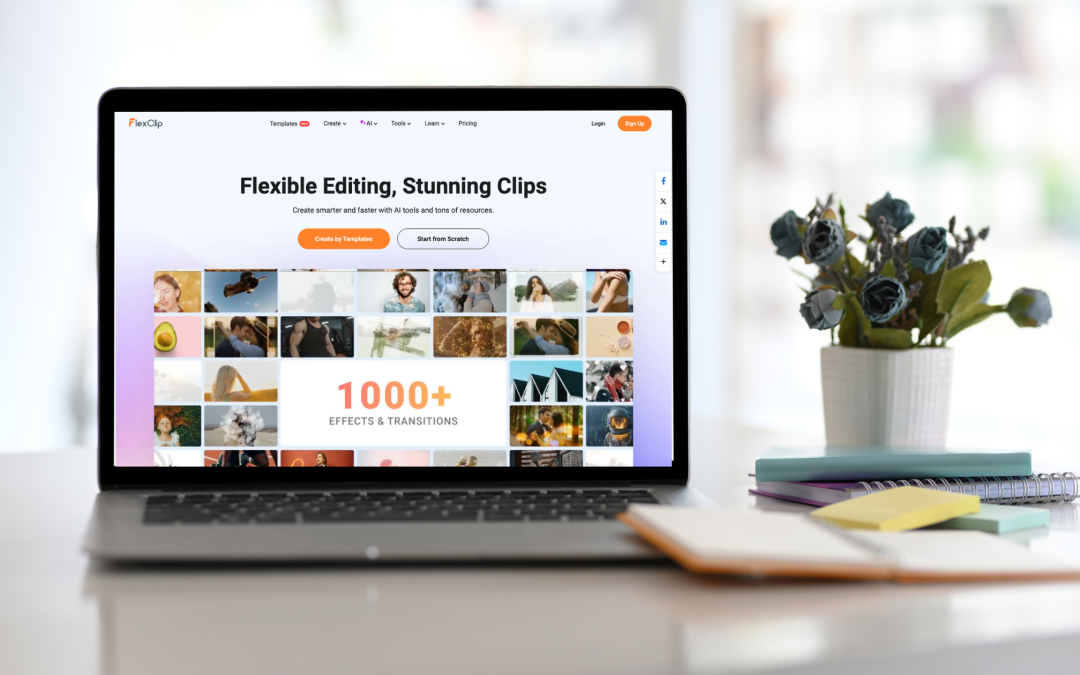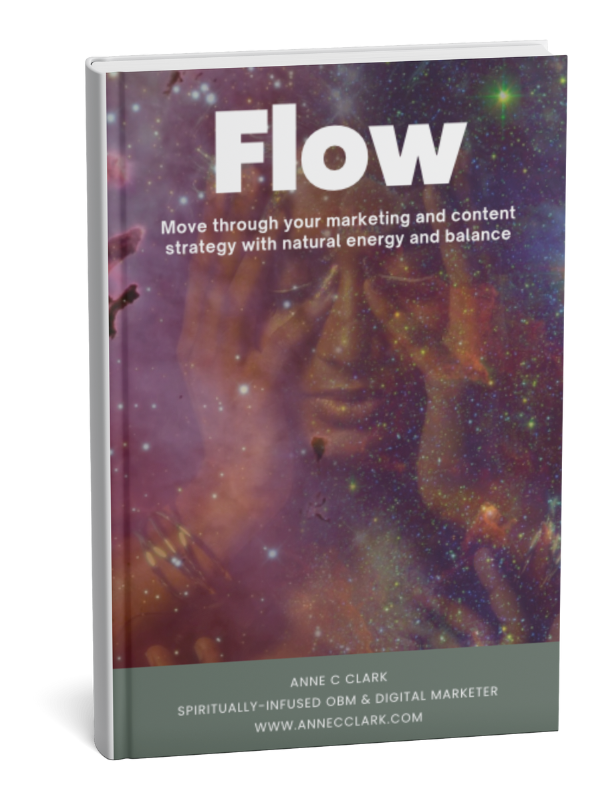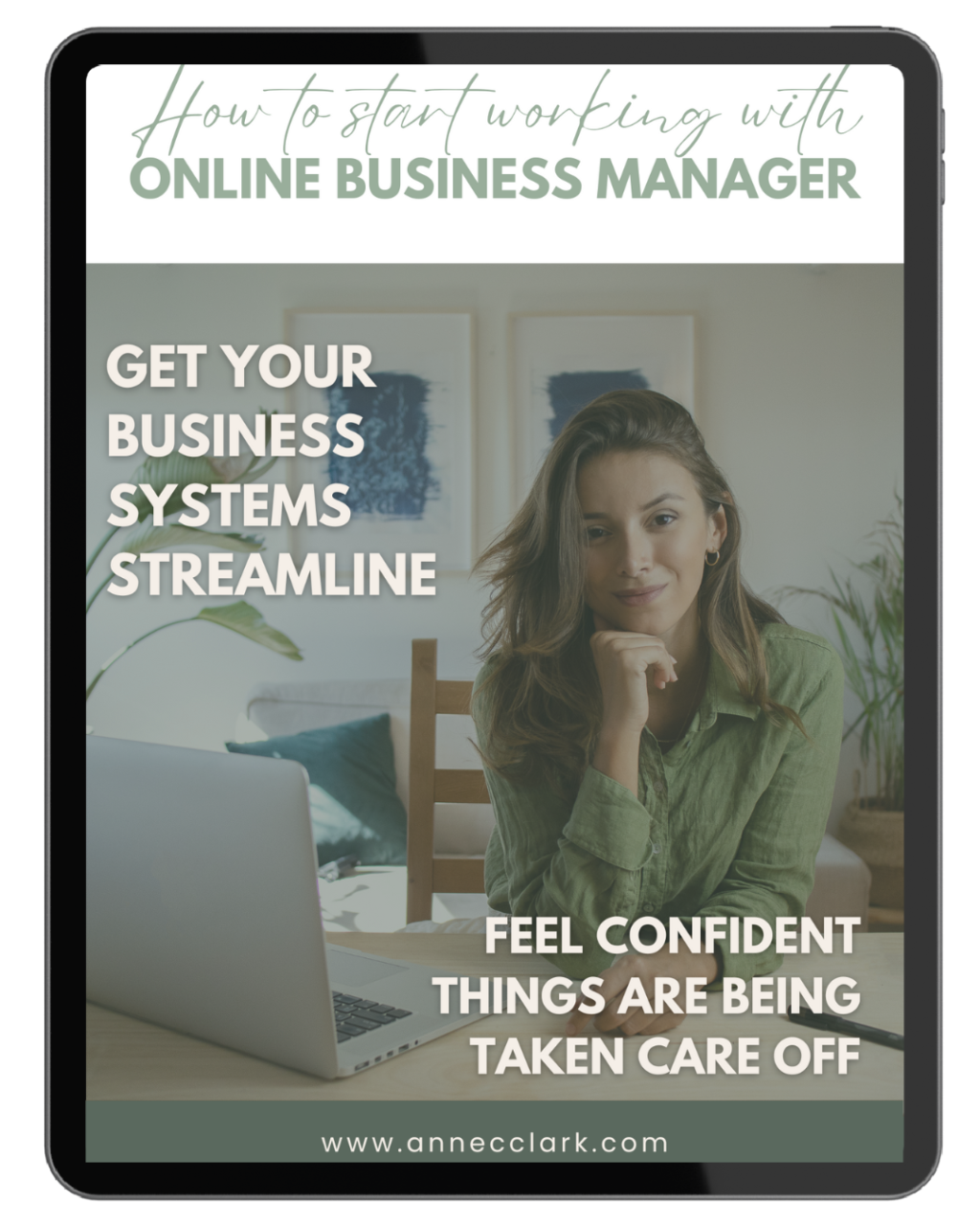
by Anne Clark | Oct 30, 2024 | Business
The Importance of Working with Aligned Clients and Customers
It’s easy to feel like every client is a good client. However, true growth and fulfillment come when you work with clients and customers who genuinely align with your values, vision, and way of working. Knowing your ideal client and staying committed to attracting those aligned with you brings profound benefits and minimises the stress and challenges that arise from misalignment. Here’s why it’s essential to know your ideal client, the benefits of working with aligned customers, and what can go wrong when you don’t.
Why Identifying Your Ideal Client is Crucial
Your ideal client is more than just someone who pays for your services; they are the people who resonate with your mission, appreciate your approach, and align with the core values of your business. They are a joy to work with, bringing energy and collaboration to the table. By identifying and attracting your ideal clients, you’re not only building a business but also creating a supportive community around you.
Benefits of Working with Aligned Clients
Working with clients who share your values and beliefs offers numerous advantages that go beyond just business success. Here are some key benefits:
- Enhanced Working Relationships and Mutual Respect Aligned clients understand your process and respect your expertise. They trust your judgement, making collaboration easier and more enjoyable. This mutual respect fosters a positive working relationship, reduces conflicts, and enhances communication.
- Improved Job Satisfaction and Motivation When you work with clients who align with your values and purpose, your work feels more rewarding. You’re no longer simply delivering a service but contributing to a vision you believe in, which boosts your motivation and job satisfaction.
- Increased Efficiency and Productivity With aligned clients, you can focus more on delivering value and less on managing misunderstandings or bridging misaligned expectations. This clear alignment streamlines workflows, allowing you to work more efficiently and effectively.
- Greater Retention and Long-Term RelationshipsAligned clients are more likely to become loyal customers and refer you to others who share similar values. This long-term relationship reduces the need for constant client acquisition, providing stability and allowing you to focus on deepening these connections. In my experience, working with aligned clients has led to incredible partnerships that span over 5 to 10 years – and we’re still going strong! These enduring relationships build a solid foundation for my business, allowing me to continually evolve alongside clients who genuinely value and trust the work we do together.
- Business Growth Through Word of Mouth When clients feel connected to you and the work you do, they naturally spread the word within their networks. This type of organic growth is powerful, as it brings in referrals who are also likely to be aligned with your values, perpetuating a cycle of positive client relationships. In fact, a vast majority of my business is referral-based, which fills me with pride and reflects the value I place on customer service and working with the right people. This steady stream of referrals is a testament to the trust and connection built with clients, showcasing the profound impact of alignment in long-term business success.
- Authentic and Empowering Work Environment Working with aligned clients creates a work environment where you can show up as your authentic self. This authenticity brings out your best work and attracts even more clients who appreciate you for who you are, making your business feel energising rather than exhausting.
What Can Go Wrong When You Don’t Work with Aligned Clients
The consequences of working with misaligned clients can be draining, stressful, and detrimental to your business. Here’s what can go wrong:
- Constant Miscommunication and Misunderstandings Clients who don’t share your values or vision often have different expectations and priorities. This misalignment leads to frequent miscommunications, frustration, and the need to constantly clarify or re-explain your process. Over time, these misunderstandings erode trust and create tension.
- Increased Stress and Emotional Burnout Working with clients who don’t resonate with your approach can be draining. You might find yourself compromising on your values or bending over backward to meet their expectations. Over time, this strain can lead to burnout, reducing your overall passion and motivation for your work.
- Reduced Quality of Work When you’re constantly adapting to a client’s demands that don’t align with your approach, it can become challenging to deliver your best work. Misaligned clients might push you to take shortcuts, adjust your style, or work in ways that feel uncomfortable, ultimately impacting the quality of your output.
- Lowered Confidence and Trust in Your Own Process Working with clients who question your process or disregard your expertise can chip away at your confidence. You may start second-guessing yourself or feel unsure about your own approach, which can hinder your professional growth and effectiveness. I’ve experienced this firsthand; when clients constantly undermine my decisions, it erodes my confidence and, in turn, compromises the integrity of my work. In contrast, when trust and confidence are present, the magic flows naturally. With aligned clients who value my expertise, I can bring my best to the table, creating a collaborative and empowering environment where we both thrive.
- Decreased Retention and High Client Turnover Misaligned clients are less likely to stick around for long. They might express dissatisfaction, leave negative feedback, or choose not to renew your services. This high turnover can create instability in your business, as you’ll constantly be seeking new clients to replace those who don’t stay.
- Disruption of Team Morale Misaligned clients don’t only impact you—they also affect your team. If you work with others, they may also feel the strain of trying to meet conflicting demands or navigating challenging communications. This misalignment can disrupt team morale, affecting everyone’s productivity and satisfaction.
How to Identify Your Ideal Client
To ensure you work with aligned clients, it’s essential to know who they are and what they value. Here are steps to help you identify your ideal client:
- Clarify Your Mission and Core Values Start by defining your mission and values. Understanding what drives you and what’s important to you in your business will help you attract clients who share similar beliefs and visions.
- Outline Key Characteristics Consider the qualities you’d like in a client—are they collaborative, open-minded, and respectful of your expertise? Do they share a passion for the same causes or value the same principles? Create a profile that captures these attributes.
- Define Your Boundaries Knowing what you will and won’t tolerate in a client relationship is crucial. Set clear boundaries and communicate them upfront, so clients know what to expect when working with you.
- Create a Clear, Aligned Message Your website, social media presence, and marketing materials should reflect your mission and values. By sharing your story and approach authentically, you attract clients who resonate with your message and deter those who don’t align.
- Ask Qualifying Questions in Initial Consultations During consultations, ask questions that reveal whether the client’s values and goals align with yours. Listen carefully to their answers to determine if they’re a good fit for your business.
Working with aligned clients and customers isn’t just a preference – it’s a powerful strategy for building a sustainable, fulfilling business. When you surround yourself with clients who share your values, your work becomes more rewarding, your relationships are stronger, and your business can thrive. By understanding your ideal client, staying true to your values, and setting clear boundaries, you create a harmonious and prosperous business environment that uplifts both you and those you serve. In the end, alignment isn’t just about business success; it’s about creating a fulfilling path that reflects who you truly are and the impact you’re here to make.

by Anne Clark | Oct 22, 2024 | Business, Digital Marketing
Creating a content calendar doesn’t have to be a complex task. In fact, having a well-organised content calendar can save you time, keep your content consistent, and give you a clear overview of your strategy. Whether you’re managing a blog, running social media accounts, or planning email campaigns, a content calendar can be your best friend. Here’s how you can create a content calendar that works for you in three simple steps.
Step 1: Plan Your Themes
The first step in creating an effective content calendar is to decide on your overarching themes. Think about what message you want to convey and how it ties into your overall goals. Themes help you stay organised and ensure that your content is cohesive throughout the month or quarter.
Here are some ideas to get you started:
- Monthly Focus: Pick a specific topic or theme for each month. For example, if you run a wellness blog, January could focus on ‘New Year, New You’ content, while February could be about ‘Heart Health.’
- Seasonal Content: Align your themes with seasonal events or holidays. This is particularly useful for product-based businesses where promotions and campaigns can coincide with seasonal buying trends.
- Evergreen Content: Include a balance of evergreen content—topics that remain relevant over time, such as how-tos or beginner’s guides—to keep your content fresh and continually useful.
By planning your themes in advance, you’ll have a structure that makes the rest of your content creation easier.
Step 2: Outline Your Posts
Once you’ve chosen your themes, it’s time to outline your content for each post. This doesn’t mean you need to write the full post at this stage, but having a general outline helps to keep you on track and reduces last-minute stress.
Consider these elements when outlining your posts:
- Post Type: Will it be a blog post, video, social media post, or email? Defining the type of content helps you allocate time accordingly.
- Headlines: Jot down potential headlines or titles for each post. Keep them clear and catchy.
- Key Points: Write out 2-3 key takeaways or points you want to cover in each piece. This gives you a direction and ensures your content stays focused.
- Call to Action: Make sure each post has a clear call to action (CTA). Whether it’s asking your audience to comment, share, or sign up for a newsletter, every piece of content should guide your audience toward the next step.
Having these elements outlined will make it easier when you sit down to write or create the actual content.
Step 3: Schedule It All in One Go
The final step is to schedule your content, and this is where the magic happens. By scheduling everything in one go, you’ll save time, ensure consistency, and maintain a bird’s-eye view of your entire content strategy.
Here’s how to go about it:
- Choose a Platform: Whether you prefer a physical planner, an Excel sheet, or a tool like Google Calendar, Trello, or Asana, pick a platform that works for you.
- Set Publishing Dates: Assign dates for each piece of content based on your themes and post types. This could be daily, weekly, or even monthly, depending on how often you want to publish.
- Batch Your Work: Consider batching your content creation. For example, dedicate one day to brainstorming, another day to outlining, and a third day to writing and scheduling posts. This helps to streamline your workflow and keeps you focused.
Once your content is scheduled, you’ll have the freedom to focus on other areas of your business while knowing your content plan is working behind the scenes.
Why a Content Calendar Works
A content calendar helps you stay organised, reduce last-minute stress, and keep your content aligned with your overall goals. It allows you to:
- Maintain consistency across platforms.
- Strategically plan content that aligns with business objectives.
- Easily adapt and update your plan when necessary.
By following these three simple steps – planning your themes, outlining your posts, and scheduling it all – you’ll have a content calendar that keeps you on track and saves you time.
So, why wait? Start planning your content calendar today and take control of your content strategy! However, if you are struggling with time, or simply don’t want to do it, then chat to me about how I can support you and do all this for you instead.

by Anne Clark | Oct 14, 2024 | Business, Customer Service
Businesses are looking to streamline operations, save costs, and deliver efficient customer service. One popular method many companies have turned to is artificial intelligence (AI) chatbots. These bots are designed to handle a range of queries, offer quick responses, and theoretically improve customer experience by being available 24/7. However, my recent experience with Asana’s AI chatbot highlighted a critical flaw in relying too heavily on AI to handle customer interactions.
The AI Chatbot Loop: My Experience with Asana
While using Asana, I encountered a technical issue. Naturally, I turned to their customer support, which was run by an AI chatbot. At first, the bot seemed promising – quick responses and a vast knowledge of pre-set solutions. But when my problem turned out to be more complex, the chatbot got stuck in a loop, continually offering the same irrelevant solutions without any option for escalation. When I tried to register my email address for the next level of support, it kept failing, and then I was looped back around. Despite multiple attempts to resolve the issue, I was left going in circles, with the chatbot unable to provide real help.
Frustrated and unable to find a resolution, I eventually gave up. I tried emailing via their website for support….and heard nothing back after 3 attempts. The AI chatbot, meant to save time and frustration, became the very reason I walked away from Asana. My trust in their service was diminished, and I wasn’t willing to waste any more time waiting for the AI to understand my problem. In the end, I moved to a new system that offered real customer support staff.
The Downside of AI Chatbots
Many businesses view AI chatbots as a cost-saving tool that can handle high volumes of inquiries at a lower expense than employing real human support agents. However, the downside to relying on AI exclusively can be significant:
-
Lack of Personalisation: AI chatbots, no matter how advanced, follow programmed scripts. If the issue is outside their range of responses, customers quickly realise they’re not speaking with someone who understands their specific problem.
-
Frustration Over Complex Issues: While AI chatbots may be able to handle basic inquiries (e.g., “How do I reset my password?”), they often fail to resolve more complex issues. When customers, like myself, find themselves stuck in a loop of automated responses, frustration builds.
-
Lack of Escalation: One of the biggest issues I encountered was the inability to escalate my problem. AI chatbots are often not designed to easily transfer to human support, leaving customers without the help they need.
-
Missed Opportunities: Businesses may lose potential customers by offering insufficient support. Just like my case with Asana, customers may walk away, feeling that their time isn’t valued.
The Benefits of Having Real Staff Over AI Chatbots
While AI chatbots can handle simple tasks, having real staff still provides a range of benefits, especially when it comes to customer retention and satisfaction.
-
Empathy and Understanding: Human support agents can offer empathy—a key component when resolving issues, especially those that frustrate customers. Real staff members can assess the tone of a conversation and adapt their approach accordingly.
-
Problem Solving Skills: Unlike AI, which works on pre-programmed responses, human agents are critical thinkers. They can navigate complex situations, ask clarifying questions, and find unique solutions tailored to a customer’s issue.
-
Building Relationships: Real staff can build long-term relationships with customers by understanding their needs and offering personalised recommendations. This not only solves the immediate problem but can also create brand loyalty.
-
Escalation Options: With human support, there’s usually an established hierarchy – agents can escalate issues to managers or specialists, ensuring the problem is resolved at the right level. This chain of escalation is something AI bots currently struggle with.
Finding the Right Balance
AI chatbots are useful for handling straightforward queries, such as FAQs or simple troubleshooting. However, businesses need to recognise that for complex or high-stakes customer inquiries, human intervention is still necessary. The key is to find a balance between automation and real human support. One solution is to implement AI chatbots as a first line of support, but ensure that escalation to real staff is smooth and accessible. However, make it easy for people to find that next level of support.
AI can be helpful….
As my experience with Asana’s chatbot demonstrates, while AI can be helpful, it has its limitations- particularly when customer issues are complex. Businesses need to consider the potential consequences of relying too heavily on AI for customer service. If the balance isn’t right, they risk frustrating customers, losing business, and damaging their reputation. At the end of the day, investing in real human customer support can not only resolve issues more effectively but also strengthen the relationship between the customer and the brand.

by Anne Clark | Oct 8, 2024 | Business, Customer Journey
As a business owner or entrepreneur, the relationships you build with clients are the foundation of your business. These partnerships fuel your success, create opportunities for growth, and are often deeply rewarding. However, there comes a time when the fit between you and a client may no longer serve your best interests – or theirs. Letting go of a client can be a challenging decision, but it’s also a powerful step towards growth, alignment, and success.
I want to explain why letting go of a client is not only okay but necessary for your business to flourish and for you to work with people who truly align with your values and vision.
1. Protect Your Energy and Time
Your energy and time are your most valuable resources. If you’re working with a client who drains more of these than they should, it’s time to reassess. Complex or unaligned clients often demand extra attention, micromanage projects, or constantly push boundaries, leaving you feeling depleted.
By letting go of a draining client, you free up mental space and time to focus on those who energise and inspire you. When your time is spent on clients who align with your vision, you can pour more into projects that light you up and push your business forward.
2. Align with Your Core Values
Your core values guide your decision-making and help define the type of work you want to do. If a client is not aligned with these values, continuing to work with them may create internal conflict. For example, if you value authenticity and transparency, but your client operates with dishonesty or is unwilling to trust your expertise, this dissonance can hinder your work and overall satisfaction.
When you let go of clients not aligned with your values, you make space for partnerships with individuals who respect and share your vision. This leads to more harmonious, meaningful, and impactful collaborations that help your business grow.
3. Focus on Clients Who Appreciate Your Expertise
It’s not uncommon for some clients to underestimate your skills, question your expertise, or refuse to acknowledge the value you bring to the table. While you might tolerate this in the short term, long-term partnerships built on a lack of trust or respect are counterproductive.
Letting go of clients who do not value your expertise enables you to work with those who appreciate and trust your work. When clients understand your worth, you can deliver better results, experience higher job satisfaction, and enjoy more fruitful, successful partnerships.
4. Create Space for Better Opportunities
Sometimes, staying tied to unfulfilling or misaligned clients blocks you from grabbing new and better opportunities. It’s like holding on to a branch too tight to reach for the next one. If you’re investing time and resources into a client who doesn’t resonate with your goals, you might miss out on opportunities to work with individuals or businesses that better suit your long-term vision.
By releasing clients who aren’t a good fit, you allow room for better, more exciting opportunities to come into your life and business. Letting go sends a clear message to the universe (and to yourself) that you are open to growth and aligned, fulfilling relationships.
5. Uplevel Your Business and Attract Ideal Clients
Your business is constantly evolving, and as you grow, so too should the calibre of clients you work with. By holding on to clients that no longer fit your ideal client profile, you keep yourself anchored to the past. Letting go of them allows you to uplevel and make room for the clients who reflect your current level of expertise and ambition.
When you consciously choose to work with aligned clients, you strengthen your brand, reputation, and the value you offer. This creates a cycle of growth and prosperity, as your ideal clients will not only challenge you in meaningful ways but also help you continue evolving.
6. Foster More Authentic, Enjoyable Relationships
Like any other relationship, business partnerships should be built on mutual respect, understanding, and enjoyment. When you’re working with clients you genuinely like and feel connected to, the relationship thrives, and so does your business. If you find yourself dreading conversations with a client or feeling an uncomfortable disconnect, it’s a sign that the relationship may not be worth maintaining.
Letting go of these clients opens the door to working with people you enjoy collaborating with – clients who inspire you, energise you and align with the kind of work you want to do.
7. Prioritise Your Wellbeing
Working with clients who don’t resonate with you can take a toll on your mental and emotional wellbeing. Whether it’s constant tension, miscommunication, or simply not enjoying the work you’re doing, the stress can affect more than just your business—it can seep into your personal life and overall happiness.
Prioritising your wellbeing is not selfish, but essential for long-term success. When you let go of clients that cause you stress, you allow yourself to recharge, refocus, and work in a state of flow, ultimately benefiting both you and your business.
So….
Letting go of a client isn’t easy, especially when you’ve invested time, effort, and energy into building that relationship. However, by choosing to release clients that no longer serve your growth or align with your values, you make room for new opportunities and aligned partnerships that will elevate your business.
When you work with clients who appreciate, energise, and align with you, the work feels lighter, more fulfilling, and infinitely more rewarding. Trust that by letting go, you are creating space for something better—and that, in itself, is a powerful step toward growth and success.

by Anne Clark | Sep 20, 2024 | Business, Digital Marketing
FlexClip for Business: The Ultimate Tool for Flexible Editing and Stunning Clips
 When you are a small business and need to create videos, but can’t afford the cost of a videographer at this stage, then I have a great tool for you to check out. FlexClip is your video editing one-stop shop. Allow me to explain.
When you are a small business and need to create videos, but can’t afford the cost of a videographer at this stage, then I have a great tool for you to check out. FlexClip is your video editing one-stop shop. Allow me to explain.
FlexClip is one such tool that empowers businesses to create professional-grade video content with ease, combining flexible editing features, AI-driven tools, and a wide range of resources designed to save time and elevate creativity.
Why FlexClip is Ideal for Business Use
Flexible Editing for Customised Content
FlexClip offers an intuitive and user-friendly interface, making it accessible to users of all skill levels. Whether you’re a novice or a seasoned video editor, FlexClip allows you to create tailored video content that aligns with your brand’s goals. With its drag-and-drop functionality, real-time preview, and wide selection of editing tools, you can effortlessly cut, trim, split, and rearrange video clips to create polished content. Flexibility is key, and FlexClip ensures that your videos can be edited quickly and precisely without the need for complex software.
AI Tools for Smarter, Faster Video Creation
Time is a valuable asset for any business, and FlexClip helps you save it with AI-powered tools designed to simplify the video creation process. Features like auto subtitle generation, background noise removal, and smart text-to-speech converters allow businesses to produce professional videos in a fraction of the time. By automating these tedious tasks, FlexClip frees up valuable time for more strategic and creative decision-making, ensuring faster turnaround times for your video projects.
Access to a Vast Library of Resources
FlexClip provides access to a huge library of stock footage, images, music, and customizable templates that are perfect for business use. Whether you’re producing a product demo, social media ad, corporate training, or internal communications video, FlexClip’s vast selection of resources ensures that you can create visually stunning and engaging content. From royalty-free music to video transitions and overlays, the platform is packed with everything you need to bring your creative vision to life.
Brand Consistency with Customisation
Maintaining brand consistency across all content is critical for businesses, and FlexClip excels at helping you stay on-brand. You can easily upload your own logos, fonts, and colour schemes to ensure every video reflects your business identity. With FlexClip, your videos are not only visually appealing but also aligned with your brand’s messaging and aesthetics.
Cross-Platform Integration for Maximum Reach
FlexClip allows for seamless cross-platform sharing, making it easy to export your videos in different formats suited for various platforms, including social media, websites, and email marketing campaigns. Whether you’re creating videos for Instagram, YouTube, LinkedIn, or your company’s internal portal, FlexClip’s export options ensure optimal quality and compatibility.
Cost-Effective Solution for Businesses
Investing in high-end video editing software can be costly, but FlexClip provides a cost-effective alternative without compromising quality. With scalable pricing options, FlexClip caters to businesses of all sizes, offering essential tools for small startups and expansive features for larger enterprises. By providing businesses with the resources they need at a fraction of the cost, FlexClip ensures a high return on investment for your video marketing efforts.
Key Benefits for Businesses Using FlexClip:
- Efficiency: AI-driven tools streamline the editing process, reducing time spent on manual tasks.
- Professional Quality: Access to a wide array of templates, stock footage, and high-quality effects for polished results.
- Scalability: Perfect for businesses of all sizes, from startups to established enterprises.
- Creativity: Customisable options allow you to create visually compelling and unique content.
- Cost-Effective: A budget-friendly alternative to high-end editing software.
FlexClip is more than just a video editor – it’s a comprehensive solution designed to help businesses create stunning, professional-quality video content quickly and efficiently. With its flexible editing features, AI tools, and vast library of resources, FlexClip empowers businesses to streamline their video production process and focus on delivering impactful content that resonates with their audience. Whether you’re looking to enhance your marketing efforts, improve internal communication, or elevate your social media presence, FlexClip provides the tools you need to succeed.
Embrace smarter, faster video creation with FlexClip and unlock the potential of your business content today!















